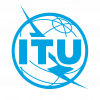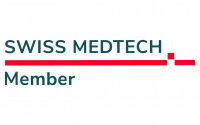BLOG
Telecom26 blog
5G – Explaining eMBB, FWA, mIoT and URLLC

And in earlier blogs we have discussed how 5G can help your business and Has 5G been a success so far?
Earlier this year, following extensive testing of many 5G networks around the world, we added 5G connectivity to our Global Roaming Service which currently provides seamless coverage across 1100 cellular networks from over 650 mobile operators in more than 200 countries.
For customers who already have 5G capable devices, our SIMs can automatically access the higher data speeds of 5G, where it’s available.
The number of countries in which we can offer 5G is growing all the time and 5G is available to all our customers with the same pricing as our other services.
Feel free to ask us where we can offer you 5G coverage.
The Four Different Services of 5G
5G as a topic causes some confusion because it’s actually a combination of four different – but related – services that offer new capabilities for different applications and user groups:
eMBB – Enhanced Mobile Broadband
EverythingRF describes eMBB as “an extension to 4G LTE networks which aims to provide higher data rates, improved latency and coverage area, among others for commercial telecommunications and applications like large-scale video streaming, and virtual reality”.
The initial phase of 5G deployment focused on eMBB to deliver a data rate of 1 Gbps and beyond to provide a better entertainment experience to the masses. It aims to provide connectivity to devices other than smartphones and also brings improvements for cloud connectivity, remote operation (be it individual work or an entire office complex), Voice of IP, real-time video monitoring, etc.
eMBB can also deliver faster and more reliable broadband connectivity in more challenging areas such as rural and remote areas in Africa – provided infrastructure is available. Of course, it can also be used in combination with other options, so when it’s not available, users will simply connect to the networks that may be present.
FWA – Fixed Wireless Access
5G delivered via FWA also provides a real substitute for fibre links – and can also be used to seed markets and drive future expansion ahead of more costly fibre rollouts.
This article in Forbes magazine is worth a read: Five Things About Fixed Wireless Access (FWA), The Future Of Broadband. This is what it says about 5G and FWA…
“The most significant competitor to broadband internet brought to the home or business via DSL, cable or fiber with Wi-Fi connecting devices is 5G for home service, also known as Fixed Wireless Access (FWA). FWA in conjunction with 5G is a scalable, cost-efficient high speed broadband technology, with a wireless connection providing the “last mile”. While the tower is connected to a larger network with wires and/or radio links. No wires are required to the customer’s premises, only a wireless receiving device”
However, in our view FWA is not a service that will generally impact individual users or those for whom mobility is essential.
mIoT – Massive IoT
5G has also been designed to offer better services to the growing number of IoT devices that will be deployed in the coming years.
In contrast to 4G, 5G supports a much larger number of devices in a given area, enabling what is known as “Massive IoT”. This support is necessary to enable the proliferation of IoT devices for a range of public and private services and applications.
mIoT builds on other approaches to cellular IoT but provides coverage to enable massive connectivity in defined areas – as many as one million per square kilometre – all of which will be useful for new applications and use cases. For example, connecting high numbers of IoT-enabled devices on freight and cargo vessels. mIoT will also be useful in private and offshore networks.
Telecom26 provides data connectivity to IoT devices around the world and you can read more about our IoT eSIM service here.
ULRCC - Ultra-Reliable Low Latency Communications (URLLC):
This is for high-performance, highly localised and critical applications that require the lowest possible latency and high network reliability such as industrial processes.
URLCC is very different from eMBB, and users of mainstream 5G services won’t get access to its special capabilities, generally speaking, as the spectrum required for URLCC is not suitable for full national deployment and coverage. It can only travel a short distance and cannot penetrate buildings, so creating network hotspots for URLLC is a specialised task.
It’s really only for highly specialised, niche services and not for general use cases - for most 5G users, these services are simply not relevant.
EverythingRF has an interesting piece here about the need for low-latency.
Telecom26, Global Connectivity and 5G
You can read some of our earlier thoughts about 5G in these earlier blogs:
If you’d like to discuss how our 5G and Global Roaming Service can keep your people and devices connected wherever they are in the world, then please get in touch.
And, we’re already eyeing the future, as we watch developments towards the definition and standardisation of future 6G networks, led by the ITU, among others. But that’s another story!
Catching-Up In-Person
Later in the year Telecom26 will be attending these major international trade fairs:
Mets Trade
15- 17 November
Amsterdam
MEDICA 2022
14–17 November 2022
Düsseldorf, Germany
If you, or one of your team, will be at any of these shows and would like to discuss our 5G IoT, maritime connectivity and global connectivity services in-person then please book a meeting.



